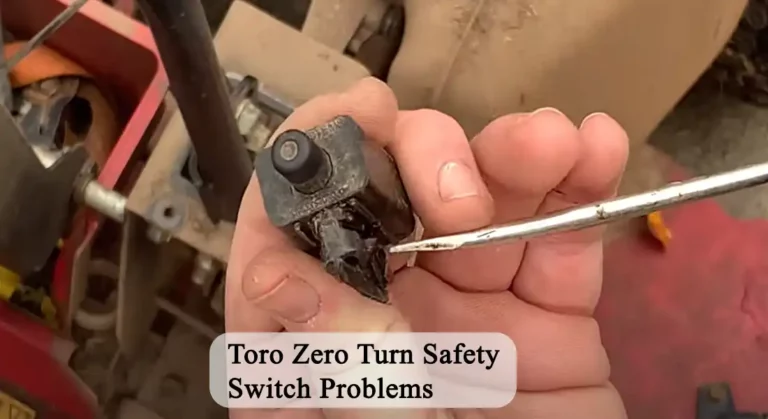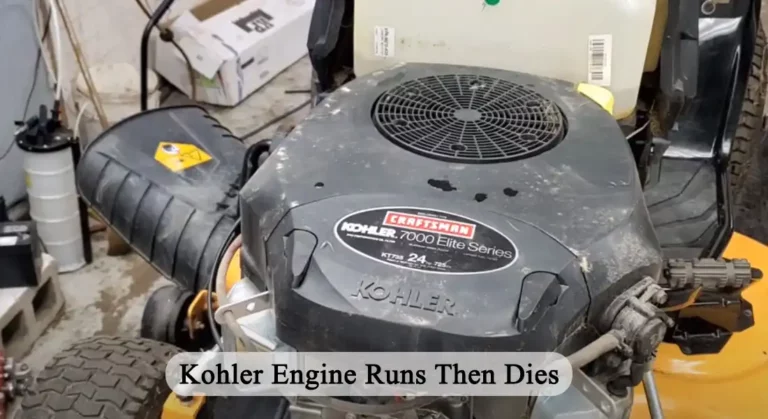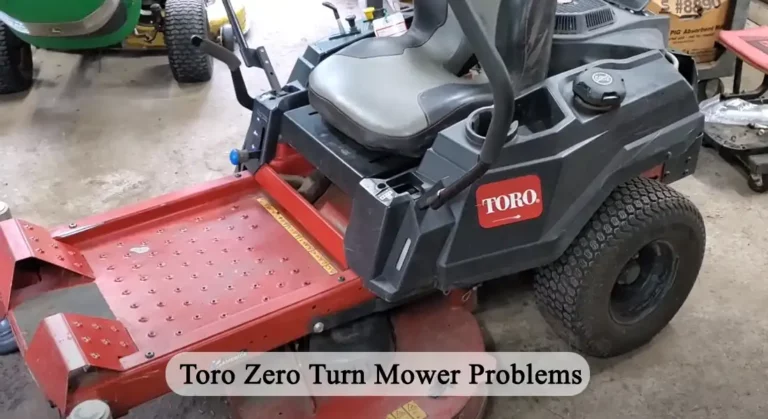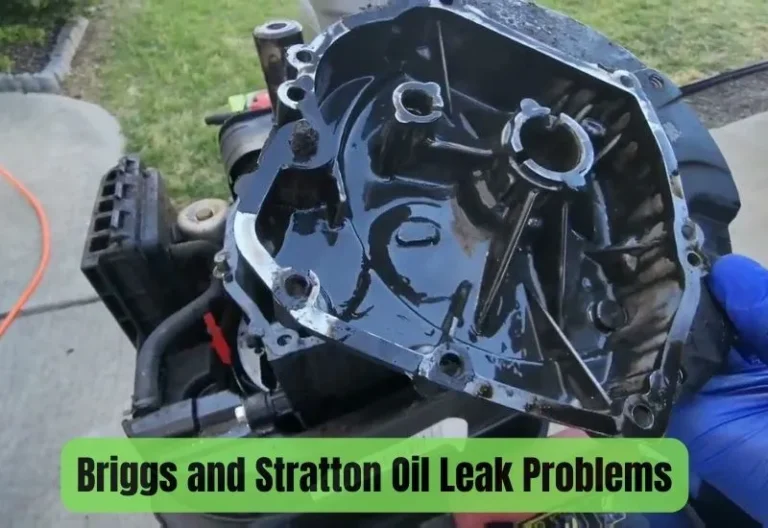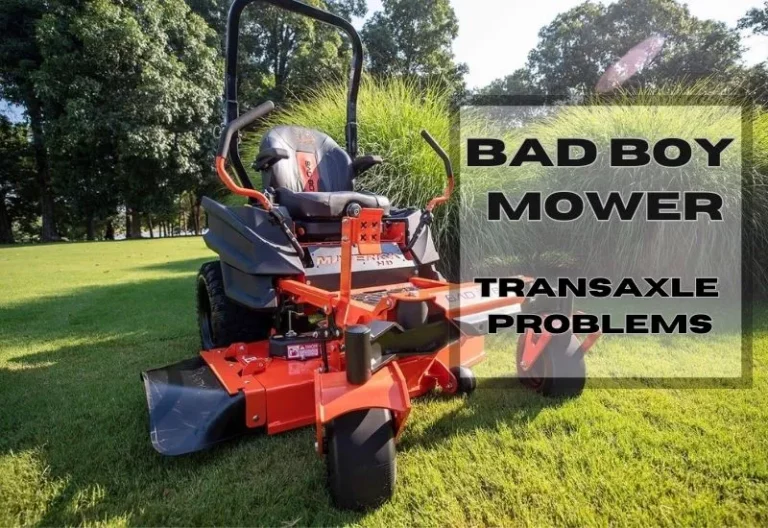Front Wheel Drive Lawn Mower Problems: Here’s How to Fix It!
Front-wheel drive lawn mowers are a popular type of walk-behind lawn mowers. Their front wheels are powered by a drive system.
These mowers are popular with homeowners because they are easy to maneuver and control. However, just like any other machine, they can develop problems that impair their performance.
Here are some of the most common Front Wheel Drive Lawn Mower Problems:
- Traction loss on hills or uneven terrain
- Slipping or skidding wheels
- Difficulties maneuvering in confined spaces
- Inconsistent cutting height or scalping
In this article, we will explore the issues regarding the Front Wheel Drive Lawn Mower and fixes.
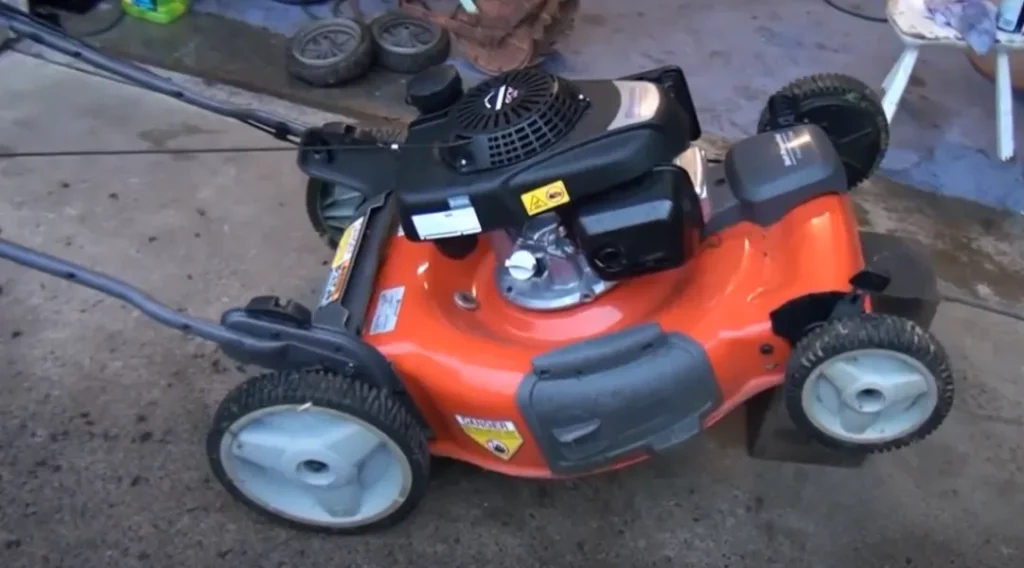
7 Front Wheel Drive Lawn Mower Problems and Their Solutions
Here are some common problems with front-wheel-drive lawnmowers and their solutions:
1. Loss of Traction On Hills or Uneven Terrain
Front-wheel drive mowers put more weight on the front wheels, causing the rear wheels to lose traction on hills or uneven terrain. On bumps, the front wheels of an FWD mower may come off the ground, resulting in no drive.
Moreover, the larger back wheels on an FWD mower make it more difficult to lift the front end and turn around.
Adding weight to the back of the mower (such as with a bagger or weight plates) can help balance the weight distribution and improve traction. To maintain traction, make sure the tires are properly inflated.
2. Slipping or Skidding Wheels
Wet grass and steep inclines can make maintaining traction difficult for an FWD mower, causing them to slip or skid. Additionally, over time, the drive wheels on a lawn mower can become worn or damaged. It causes the skidding of the wheels.
Another underrated cause is a clogged air filter. It causes the engine to lose power.
And another obvious cause is a damaged or worn transmission. Because the engine power is not properly transferred to the wheels.
Solutions for front-wheel-drive lawnmowers with slipping or skidding wheels may include:
- Cleaning the drive wheels and the surrounding area to remove any debris or buildup.
- Replacing the drive wheels if they are worn or damaged.
- Cleaning or replacing the air filter.
- Repairing or replacing the transmission if it is damaged or worn.
- Changing the mowing pattern to avoid wet grass or steep inclines.
Some of these solutions might require the services of a professional mechanic or lawn mower repair service.
3. Difficulties Maneuvering in Confined Spaces
Because the rear wheels of a front-wheel-drive lawn mower lack power and traction, they can slip or drag when turning. And as the FWD mowers have the majority of their weight in the front. This makes it difficult to maneuver in tight spaces and make tight turns swiftly.
It is difficult for the front wheels to swivel or pivot. Try the following to make things a bit easier in confined spaces:
- Adding weight to the rear of the mower. It helps balance out the weight distribution and improve traction on the rear wheels.
- Using a zero-turn lawn mower. The independently controlled rear wheels can pivot in place.
- Upgrading to a rear-wheel-drive mower if you have more confined spaces.
4. Inconsistent Cutting Height or Scalping
When used on uneven terrain, the front wheels of the FWD mower may lift off the ground, causing the mower deck to drop and scalp the grass. As a result, you get uneven cuts and inconsistent height.
Raise the mower’s cutting height to prevent scalping. Or avoid using the mower on uneven terrain. Maintaining the weight of the front wheels might also help.
5. Excessive Vibration or Shaking
An unbalanced blade can cause excessive vibration, especially at high speeds. Sharpen or replace the blade, and check for proper balance.
Excessive vibration can also be caused by a bent or damaged/ loose or worn blade that does not rotate smoothly. Change the blade.
Moreover, FWD mower engine mounts are prone to becoming loose or damaged. It can cause excessive engine vibration. As needed, tighten or replace the engine mount.
6. Worn Wheel Gears
Front-wheel drive lawnmowers have numerous moving parts, including wheel gears. They can wear out with repeated use. You may notice that FWD mowers produce more noise than other mowers and this is exactly why.
Wheel gears that are severely worn must be replaced. Get replacement parts from the manufacturer or authorized dealers.
Additionally, lubricating the wheel gears regularly can help prevent wear and tear and extend their lifespan. It is recommended that the wheel gears be lubricated every 25 hours of operation.
7. Bent or Damaged Wheel Axles
Due to the weight of the engine and the frequent direction changes required while mowing, FWD mowers easily get bent or damaged wheel axles. The constant turning and pivoting movements damage the axles.
Keeping the wheels and axles clean and free of debris, as well as ensuring that the wheels are properly lubricated can help prevent wheel axle damage.
Sharp turns can put undue strain on the wheel axles, so it is best to avoid them when mowing. Instead, make wider, gentler turns on the axles.
Maintenance of Your Front Wheel Drive Lawn Mower
Your front-wheel drive mower’s drive belt can wear out over time, causing the mower to lose power. Examine the belt for wear and replace it as needed.
Examine the wheels and tires for wear and damage. Ensure that they are properly inflated. This will ensure that the mower is easy to maneuver and has good traction.
Dull blades can make the mower work harder, resulting in uneven cuts. Sharpen the blades regularly to ensure that the mower cuts efficiently.
Cost of Troubleshooting Front Wheel Drive Lawn Mower Problems
According to some online sources, the average labor cost for troubleshooting a lawn mower is between $50 and $100 per hour. This cost, however, will vary depending on the repair shop or technician you use.
Depending on the type and quality of the parts required, the cost of the parts could range from a few dollars to several hundred dollars. Add the brand or model to that equation. For example:
- Toro Recycler 22 in. mower can cost between $50 and $200.
- The cost of troubleshooting a Craftsman M215 mower can range from $50 to $150.
- Troubleshooting a Husqvarna LC221FH mower can cost between $50 and $200.
It’s best to contact a local lawn mower repair shop and ask for a quote based on the specific issue you’re experiencing.
Related Post: What Does A Muffler Do On A Lawn Mower?
Front Wheel Drive Lawn Mower Problems – FAQs
Can I use my front-wheel drive lawn mower on wet grass?
Yes, but be cautious as it can cause the wheels to slip and the cutting quality to suffer.
How do I maintain the drive system on my front-wheel drive lawn mower?
Regularly check and change the drive belt, lubricate gears, and inspect and tighten bolts and nuts.
What are the advantages of a front-wheel drive lawn mower?
They are easy to maneuver and control, making them ideal for use on smaller lawns.
Related Posts:

